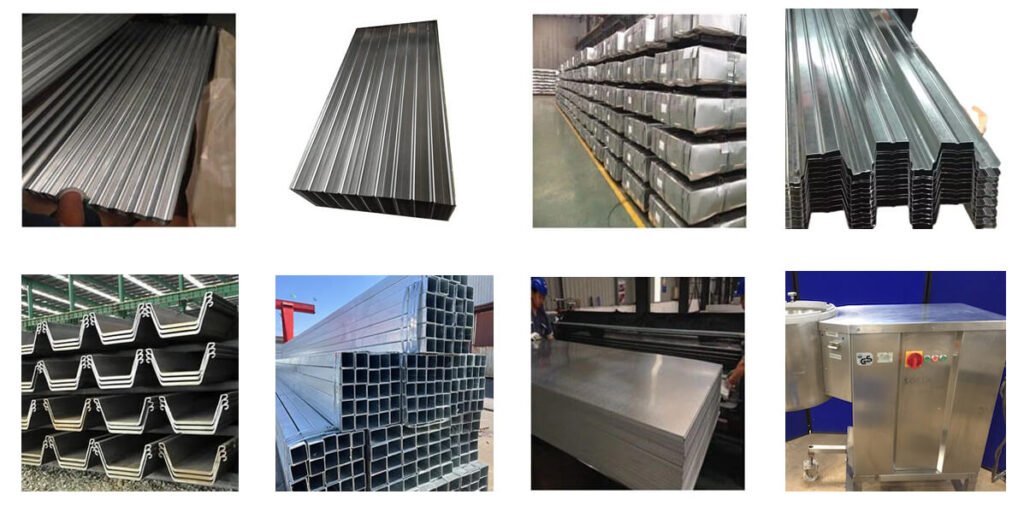Q195 Steel Grades
Low-Carbon Structural Steel for High Workability and Versatile Applications
- Technical Support
Q195 Steel Technical Specifications & Applications
Q195 is a low-carbon cold-rolled steel grade under the Chinese standard GB/T 700. It has low carbon content, which gives it excellent formability, weldability, and ductility. Q195 is suitable for applications that require moderate strength, easy bending, stamping, and shaping. It is commonly used in construction, automotive, and manufacturing industries for products such as steel sheets, pipes, fences, and structural components. Its smooth surface allows for good painting, coating, and galvanizing, making it cost-effective and reliable for general-purpose applications.
Table of Contents
1. Typical Uses & Selection Guidance
- Q195 Overview Q195 is a low-carbon carbon steel grade specified under the Chinese standard GB/T 700. It is characterized by its low carbon content, typically ranging from 0.06% to 0.12%, which imparts excellent formability, weldability, and ductility. These properties make Q195 suitable for applications that require moderate strength and high workability.
- Corrosion Protection While Q195 itself is not galvanized, it is commonly used as a base material for hot-dip galvanizing processes. The resulting galvanized Q195 steel offers enhanced corrosion resistance, making it suitable for outdoor and industrial applications. The clean surface of Q195 allows for superior adhesion of zinc coatings, ensuring long-lasting protection against rust and oxidation.
- Forming Advantages
Q195 offers reliable elongation, bendability, and formability, making it suitable for stamping, cutting, and shaping into various components. It is widely used in the production of structural beams, chassis components, wire rods, and metal frames. Manufactured to strict quality standards, Q195 ensures consistent performance and dependable mechanical properties.
In summary, Q195 is a versatile, cost-effective steel grade that balances strength and formability, making it a preferred choice for general-purpose applications in various manufacturing sectors.
2. Technical Specifications Table
1. Chemical Composition Requirements (Maximum %)
| Steel Grade | Carbon (C) | Manganese (Mn) | Phosphorus (P) | Sulfur (S) | Silicon (Si) |
|---|---|---|---|---|---|
| Q195 | 0.06–0.12% | ≤0.50% | ≤0.035% | ≤0.040% | ≤0.30% |
2. Mechanical Property Requirements (Maximum Values)
| Steel Grade | Min. Yield Strength (MPa) | Min. Tensile Strength (MPa) | Min. Elongation (%) Lo=80 mm | Bend Angle (°) | Mandrel Diameter (× Thickness t) |
|---|---|---|---|---|---|
| Q195 | ≥195 | 315–430 | ≥33% | 180° | — |
| SPCC | 140–280 | ≥270 | ≥34% | 180° | — |
3. Mechanical Property Requirements (Maximum Values)
| Coating Class | Mandrel Diameter (× Thickness t) |
|---|---|
| Z100, Z200 | 1t |
| Z275, Z350, Z450, AZ150, AZ200, AM100, AM125, AM150, AM175, AM200, AM225 | 2t |
| Z600 | 3t |
4. Applicable Hot-Dip Metallic Coating Types
| Coating Class | Composition (%) | Key Features |
|---|---|---|
| Z (Zinc) | ≥99% Zinc | Basic corrosion protection; suitable for general use. |
| ZA (Zinc-Aluminium) | 95% Zn, 5% Al | Improved corrosion resistance over pure zinc. |
| ZF (Zinc-Iron) | Zinc with iron alloy | Enhanced hardness and wear resistance. |
| ZM (Zinc-Magnesium) | Zn with 2–4% Mg, 5–13% Al | Superior corrosion resistance in harsh environments. |
| AZ (Aluminium-Zinc) | 55% Al, 43.5% Zn, 1.5% Si | Excellent corrosion resistance and heat reflectivity. |
| AM (Aluminium-Magnesium) | Al with Mg alloy | High corrosion resistance; suitable for high-temperature applications. |
3. Q195 vs Q235 Steel — What’s the Difference?
| Property | Q195 Steel Grade | Q235 Steel Grade |
|---|---|---|
| Yield Strength | ≥195 MPa | ≥235 MPa |
| Tensile Strength | 315–430 MPa | 370–500 MPa |
| Elongation (80 mm) | ≥33% | ≥24% (Grade A) |
| Bendability | 180°, standard thickness | 180°, standard thickness |
Q195 Steel FAQ:
Q195 is a low-carbon structural steel under the Chinese standard GB/T 700. It has a yield strength of ≥195 MPa and tensile strength of 315–430 MPa. Known for excellent formability, weldability, and cost-efficiency, Q195 is widely used in structural components, wire rods, and metal frames across construction and manufacturing industries.
Q195 steel consists of:
Carbon (C): 0.06–0.12%
Manganese (Mn): 0.20–0.50%
Silicon (Si): ≤0.30%
Phosphorus (P): ≤0.035%
Sulfur (S): ≤0.045%
This composition provides moderate strength, high ductility, and excellent suitability for welding and cold-forming processes.
Yield Strength: ≥195 MPa
Tensile Strength: 315–430 MPa
Elongation (80 mm): ≥33%
Bendability: 180° at standard thickness
These properties make Q195 ideal for applications that require good workability and reliable structural performance.
Q195 steel is widely used for:
Structural components: beams, columns, frames
Wire products: wire rods, mesh, binding wire
Pipes and tubes: welded and seamless pipes
Automotive parts: brackets, supports
Household appliances: panels, frames
Its versatility, surface quality, and cost-effectiveness make it suitable for construction, automotive, and general manufacturing industries.
Q195: Yield strength ≥195 MPa, tensile strength 315–430 MPa, excellent formability.
Q235: Yield strength ≥235 MPa, tensile strength 375–500 MPa, higher strength for structural applications.
Q195 is preferred when moderate strength and high workability are needed, while Q235 is better for structural uses requiring higher strength.







